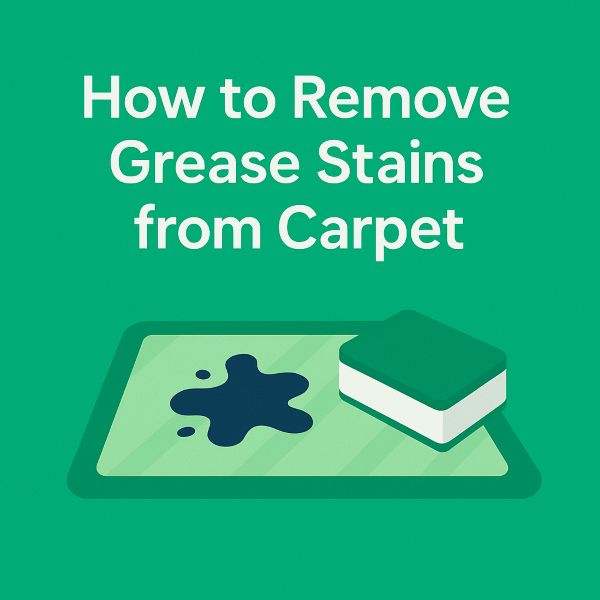Robiul Alam How to Clean Fridge Outside – 7 Easy DIY Methods 2025Discover


Discover effective, step-by-step methods how to remove grease stains from carpet safely. A complete guide for busy homeowners, tenants, landlords and property managers.


Grease stains on carpet can quickly become unsightly, whether it’s a cooking mishap in the kitchen or oil from machinery in a home workshop. Learning how to remove grease stains from carpet effectively can save time, money and stress—especially when you’re juggling a busy schedule.
For a complete walkthrough on maintaining spotless flooring, learn how to clean carpet full edition with our in-depth guide.
Though often used interchangeably, ‘grease’ and ‘oil’ stains differ slightly. Grease tends to be thicker—think butter, margarine or frying oil—whereas oil spills (such as engine oil or salad dressing) can be more fluid.
Both penetrate carpet fibres, attracting dirt and grime over time. Synthetic carpets (nylon, polyester) usually resist grease better than natural fibres (wool, cotton), but all carpets can benefit from prompt treatment.
Grease is hydrophobic, meaning it repels water and clings strongly to fibres. The longer it sits, the deeper it bonds with the carpet backing and underlay.
Before you begin, gather these items to tackle the stain swiftly:
Gently press a clean cloth onto the stain to absorb as much grease as possible. Work from the edges towards the centre to avoid spreading.
Sprinkle a generous layer of cornstarch or baking soda over the stain. These dry powders draw oil out of the fibres.
Leave for at least 15–30 minutes—or overnight for set-in marks.
Use your vacuum’s hose attachment to remove the powder. You should see a noticeable lightening of the stain.
Combine one teaspoon of mild dishwashing liquid with one mug of warm water. Pour the mixture into a spray bottle.
Lightly mist the stained area—avoid soaking. Allow 5 minutes for the detergent to break down remaining grease.
Blot with a new white cloth to lift the dissolved grease. For stubborn edges, use a soft-bristled brush to agitate fibres gently.
Spray plain warm water to rinse out detergent residue. Blot with a dry cloth until the carpet feels only slightly damp.
If traces remain, repeat steps 2–7. For very tough stains—such as automotive oil—apply a specialist carpet degreaser following the manufacturer’s instructions and patch-test first.
Once clean, allow the area to air-dry fully. Use a clean brush to lift the carpet pile, restoring its texture.
If you’re keen on natural methods, consider:
For more greasy-stain hacks, Good Housekeeping and Better Homes & Gardens offer expert advice.
If you’ve tried home methods twice without success, our Glohus team can help. We assess your carpet fibre and stain type, using industrial-grade degreasers safely to restore your flooring.
Tackle it as soon as possible—ideally within minutes. Fresh grease is far easier to remove than set-in oil.
When diluted (one part vinegar to two parts water), it’s generally safe. Always patch-test first to ensure no discolouration.
Both work well. Cornstarch is slightly finer and may feel gentler on delicate fibres.
Mild, dye-free detergents are safe when diluted correctly. Rinse thoroughly to avoid sticky residue.
Older grease stains often require professional intervention. If home methods fail after two attempts, contact Glohus for expert cleaning.
If greasy mishaps are getting the better of you, our Glohus specialists in Hertfordshire are here to help. Book a professional carpet cleaning today and enjoy peace of mind with truly clean floors.

Robiul Alam How to Clean Fridge Outside – 7 Easy DIY Methods 2025Discover




Robiul Alam How to Clean Stainless Steel Fridge – 5 Best Proven
